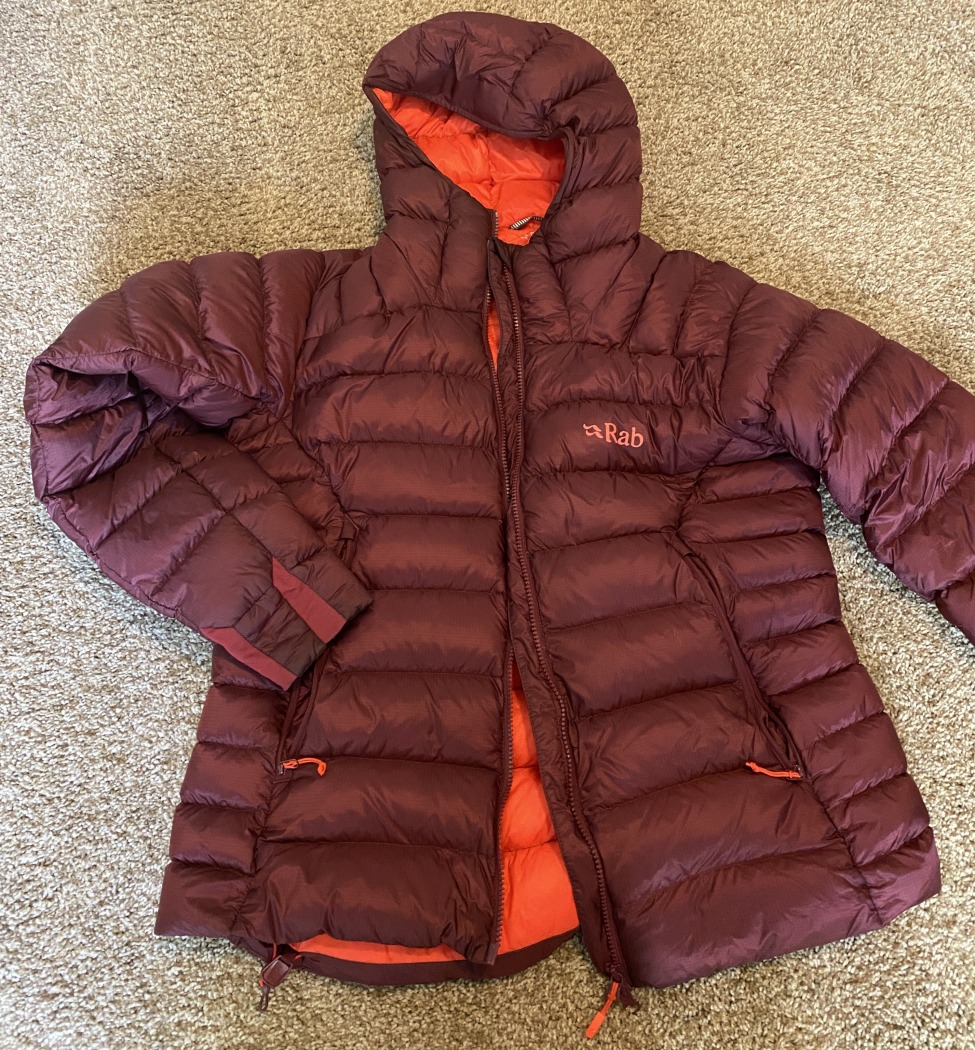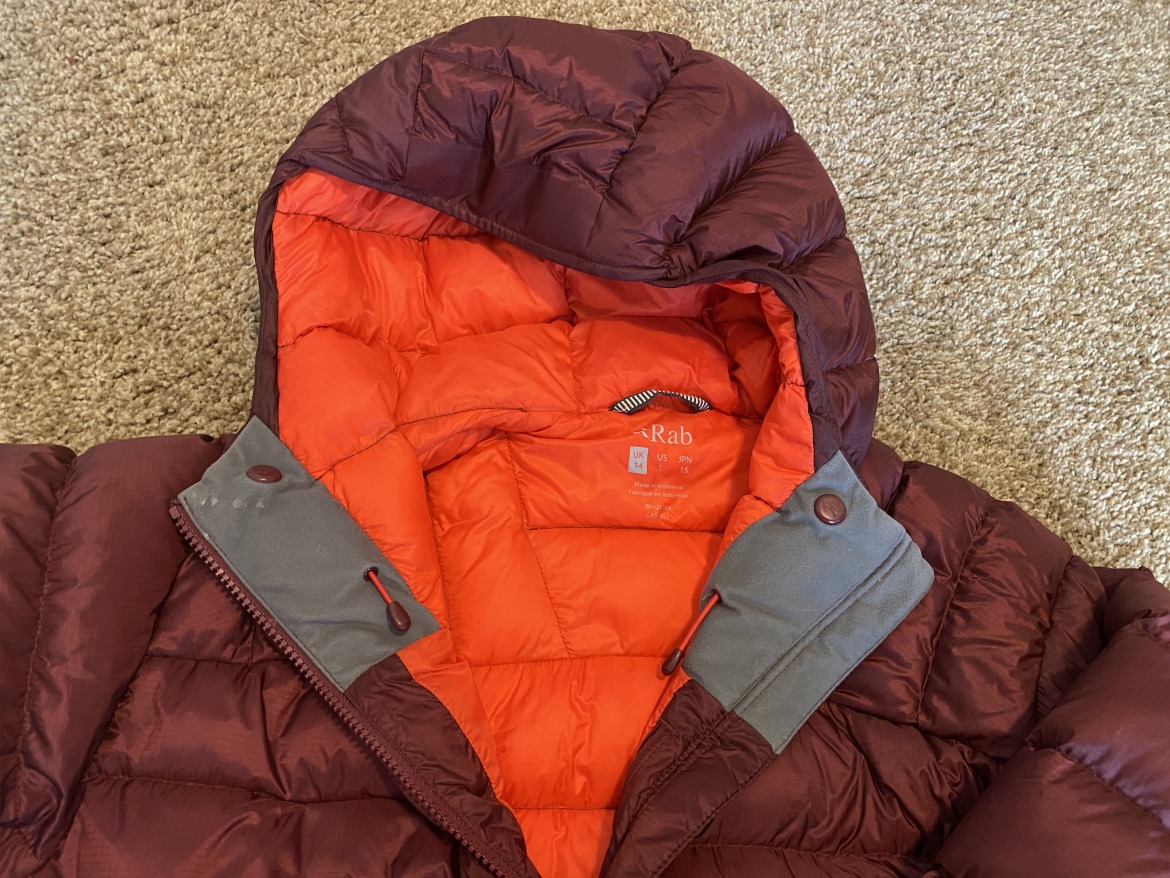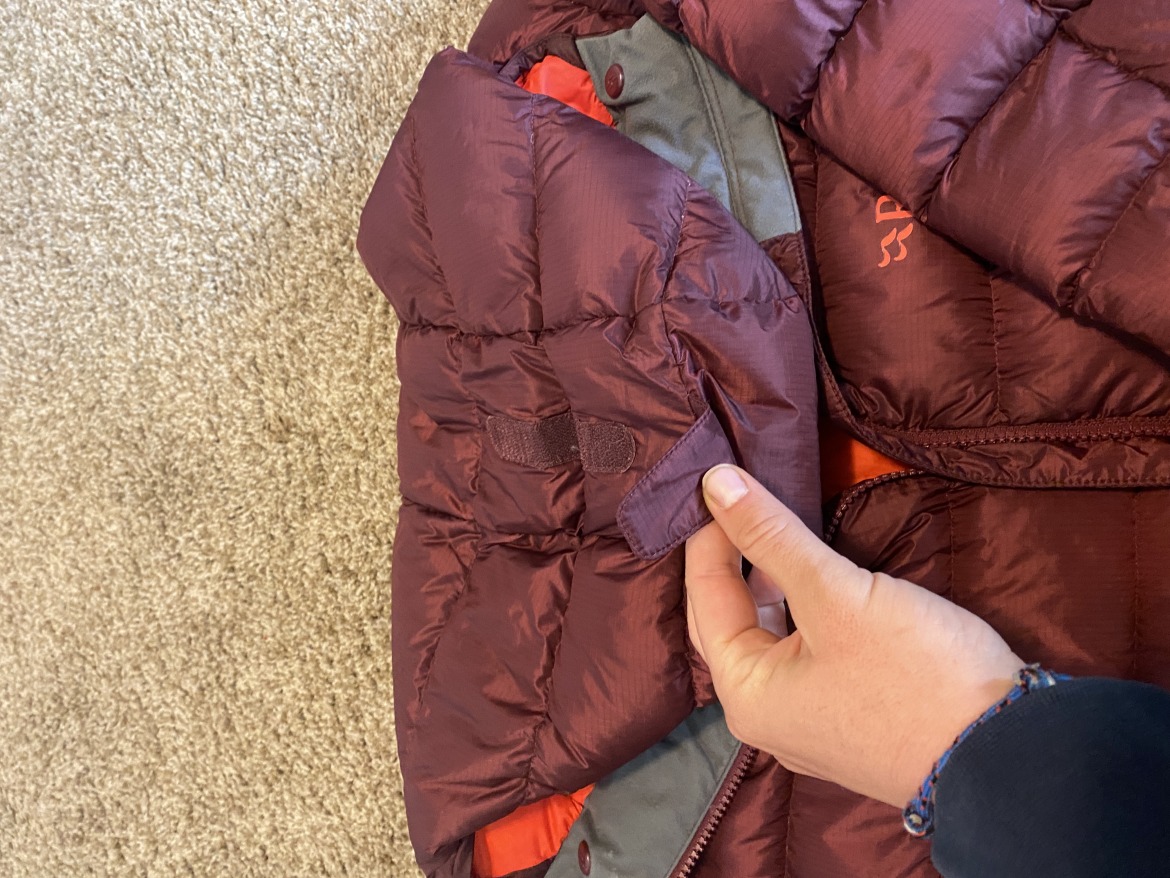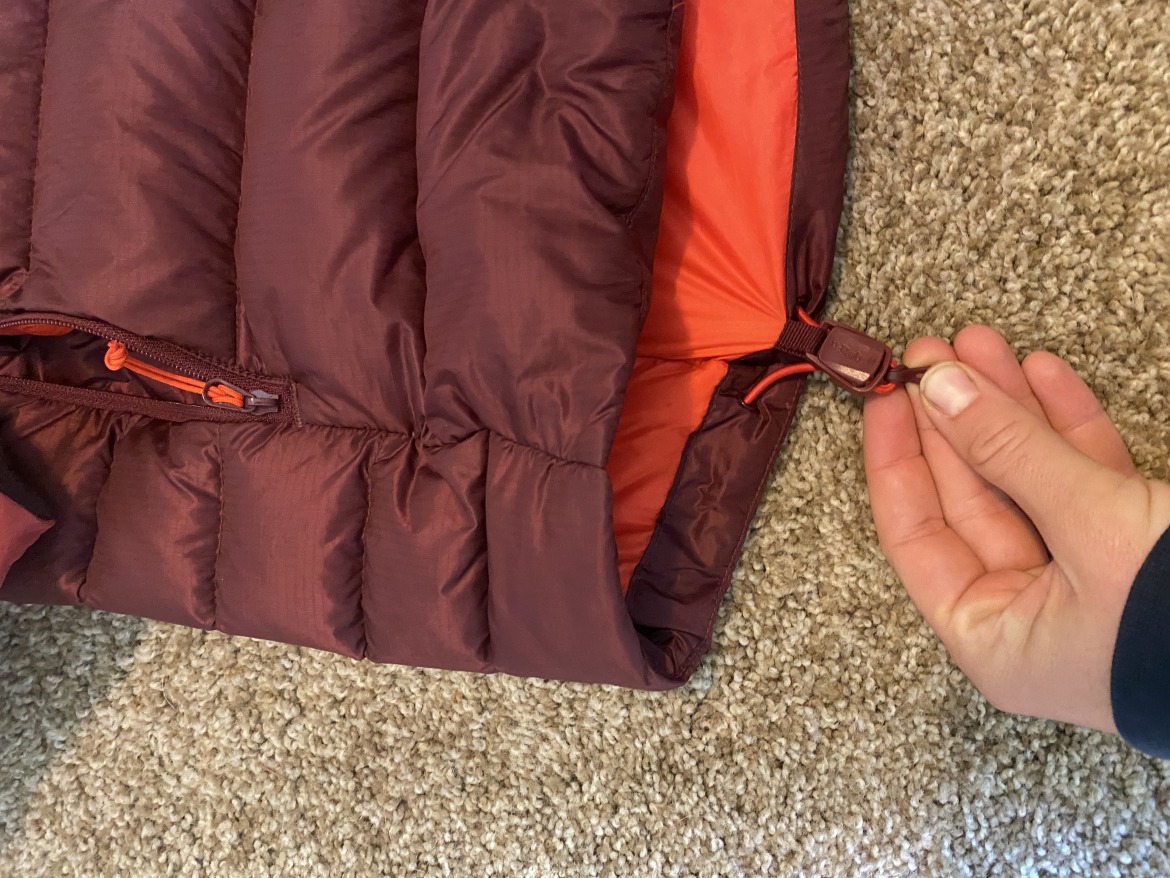
The sleeves on the Rab Women’s Electron Pro Down Jacket include a stretchy material, making it easier to pull puffy over gloves.
The devil is in the details when selecting a puffy jacket. Down or synthetic? Is 800-fill down suitable? And how stylish is it? These questions and more are answered in the review of the Rab women’s Electron Pro Down jacket.
There are many puffy jackets on the market these days – it’s easy to get lost in the abundance of choices. When I got into backcountry skiing, I exclusively bought jackets on sale and figured out the best conditions they worked for once I already owned them. Lately, I realized that I hate when I have layers of clothing collecting dust in my closet, and I appreciate my purchases more when done with intention.
I will share what I have learned over the years of puffy jacket management with you.
First, let’s talk about all the features that matter in a puffer, in the order that I find most important when it comes to snow adventures.
1. Hood
Always a yes. My go-to is a jacket with a hood. That extra weight is worth it every time, even for lightweight layers. Hoods technically fit into the category of “warmth,” but to me, having a hood is essential, so it gets its own category.
2. Insulation: Down vs Synthetic
Insulation is the material inside the jacket that helps create a cozy paradise when out in the cold. The two most common fills are down and synthetic. Down is a natural feather material that features characteristics such as warmth, durability, smaller environmental footprint, more expensive, and loses warmth when wet.
Synthetic is produced from polyester fibers, with characteristics of waterproofness, less expensive, less durability, less warmth, and heavier then down.
Depending on the type of insulation, the jacket’s construction may be different. Newer technologies in stitching actually do not involve a thread, the baffles holding the contents/insulation are created with heat instead.
The main advantage of synthetic material is that it continues to stay warm when wet, a key piece to have for where I currently live due to the high contents of water in all of our precip.
3. Thickness/Warmth
The material thickness will determine the layer’s attributes: superlight, light, mid, or full weight. These words refer to both down and synthetic jackets.
When referring to down specifically, another notation of thickness is down fill power (600/700/800), which represents the relative quality of down for insulation.Down fill power alone wouldn’t characterize how warm a layer may be; it is important to note how many grams of down are present in the item as well,but unfortunately that number is rarely shared in the specs details. I always carry a heavier and well-tested (in cold weather) 800-filled down puffer with me; it keeps me warm when I need it, but also acts as an emergency layer.
4. Weight/Packability
It’s best when the layer can pack down to a small size and not take too much room in the pack. Down jackets, especially the warmest ones, are more packable than synthetic ones.
5. Length
Anytime I try a jacket on, I stop to check the length. I have a fairly long torso and prefer a longer fit (almost covering half, if not all, of my butt, if not all), as I find that they keep me warmer.
Generally, with sizing, I go with a Large, mainly to ensure I get that extra length.

The top of the zipper features soft fabric on both sides which feels pleasant on your face, both when the hood is up or not.

There is a small velcro to adjust hood size which I never really used but I like the idea.
Summary of the Electron Pro Down Jacket
Based on the categories below, I have come up with four puffy jackets that I own to satisfy the specific needs I have during snow travel.
Superlight Synthetic puffy jacket – one I bring with me always ( Yulia’s choice: Arcteryx Atom SL)
Lightweight Synthetic puffy jacket that I use during backcountry skiing on colder winter days instead of my superlight puffer, I most commonly wear this when I am skiing lifts (Yulia’s choice: Patagonia Nano puff)
Mid-weight Down puffy jacket for colder days to throw on while descending (Yulia’s choice Rab Electron Pro Down jacket)
800 filled Down puffy jacket to keep as an emergency layer (Yulia’s choice: Patagonia Fitz Roy)
This winter, I tested the Rab Women’s Electron Pro Down Jacket. Looking at the jacket specs, I initially thought this would be on par with my 800-fill down insulation layer since temps in the PNW rarely go down below the twenties. I was surprised to discover that the puffer ended up being less warm than I expected – it worked to keep me toasty for shorter spurts of time, like transitions or less high output movement. It did not keep me warm while waiting out weather or visibility that lasted more than a few minutes with a breeze present. It certainly helped make me warmer, and with an addition of a shell contained my body temperature, but it was just not generating as much heat as I expected. My guess is that the amount of down in Electron is less compared to my other slightly heavier 800-fill down jacket. But as noted, that type of information is tough to come by.

The bottom can be tightened for a cozy fit.
With that said, the Electron Pro worked exceptionally as a midweight puffy jacket for me. When I wore it during colder descents, I didn’t get sweaty mid-run, allowing me to maintain a comfortable core temperature. The jacket is light and packs down to a small size. I usually wore it under a shell but did not have issues with it getting wet or even damp this past season during normal use. Anytime the layer did get wet, usually due to being next to something wet in my pack, it was quick to dry.
The Rab women’s Electron Pro Jacket, which also comes in a men’s style, costs $330.00.
My only gripe is that the Rab logo is starting to peel off, otherwise we have had a superb season together.
As we welcome fall and start yet again dreaming of winter, I hope you find the perfect puffy jacket to fit your needs.
You can find the Rab Electron Pro Jacket here.
WildSnow Girl, Julia Dubinina, is a weekend warrior chasing snow in winter and sun in summer. A lover of long tours and steep skin tracks, she explores the Pacific Northwest and beyond. When she is not out adventuring, she is working away at her corporate desk job for a software company to make her next adventure happen.
